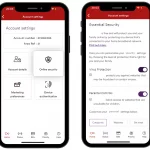Ofcom Begins Consultation on Future Spectrum for UK Mobile Broadband

The telecoms regulator has today launched an all-encompassing Mobile Data Strategy consultation that will attempt to identify and free-up a maximum of 881MHz in additional downlink radio spectrum (the 600MHz, 700MHz, 2.3GHz, 2.7GHz, 3.4GHz and 3.7GHz bands) for use by superfast 4G and future 5G style Mobile Broadband services.
Ofcom currently predicts that demand for mobile data will be 80 times higher in 2030 and it estimates that over the same period this “new” spectrum could boost related capacity by more than 25 times. Unfortunately radio spectrum is not an unlimited resource and thus the regulator is seeking to use what little remains “as efficiently as possible“.
Advertisement
Ed Richards, Ofcom Chief Executive, said:
“The demands for mobile data will only increase as millions more wireless devices connect to the internet and each other. We’re looking at ways to use spectrum more efficiently and consider future releases of prime spectrum. By doing so, we can help to meet the significant demands placed on our wireless infrastructure and develop one of the world’s leading digital economies.”
The Identified Spectrum Bands
White Spaces (600MHz):
Around 20 organisations are currently participating in a 6 month pilot to road-test ‘white space’ technology, which harnesses the spare spectrum that exists between digital terrestrial TV channels for data and Internet communications (e.g. rural broadband provision). At present this is focused on the 700MHz (DTTV) band but after around 2018 if DTTV is moved into 600MHz then White Spaces would most likely follow.
700MHz:
While no decisions have yet been made, Ofcom is investigating the potential to rearrange the bands used for Digital Terrestrial TV (DTTV). This could release more of this prime spectrum for mobile broadband (possibly 5G) use sometime after 2018, while ensuring that consumers would continue to have the opportunity to benefit from digital terrestrial TV (the preliminary idea is that TV could be moved into the 600MHz band).
2.7GHz:
The 2.7GHz band is currently being used for radar but Ofcom believes that it could potentially release up to 100MHz of spectrum from here for other uses.
2.3GHz, 3.4 GHz:
Ofcom is working closely with the Ministry of Defence (here) to move this spectrum from the public sector into commercial use. This spectrum is suitable for mobile broadband and could be released through an auction in 2015-16. The public sector has access to just over half of the UK spectrum, and Ofcom is working with Government to identify ways of increasing opportunities for commercial access in the future.
Note: similar spectrum between 3480 – 3500MHz and 3580 – 3600MHz (3.4-3.6GHz) is already under licence for civil use by UK Broadband (PCCW), which has since launched it its own fixed wireless 4G LTE network in places like Scunthorpe and Swindon
3.6GHz:
The 3.6GHz band is used for Satellite links but Ofcom believes that some of it could be shared with mobile users.
It’s worth pointing out that lower frequency spectrum (e.g. 600MHz, 700MHz etc.) has a number of advantages, such as its ability to cover a wide area (often for a lower cost) and better penetration through walls (good in-building coverage). By comparison higher frequencies (e.g. 2.7GHz) tend to require more cell sites to cover a similar area but this also means they have access to greater capacity and speeds.
The regulator currently envisages a future where Mobile Broadband could eventually become a true “fixed line substitute“, which is certainly plausible but we’re not quite there yet (data allowances have to at least match a good fixed line link first).
The new consultation will remain open until 30th January 2014 and we suspect that Ofcom, given the complexity of what is involved here, will then take plenty of time to review the responses before proposing the next stage (more consultations).
Ofcoms UK Mobile Data Strategy Consultation
http://stakeholders.ofcom.org.uk/consultations/mobile-data-strategy/?a=0
Mark is a professional technology writer, IT consultant and computer engineer from Dorset (England), he also founded ISPreview in 1999 and enjoys analysing the latest telecoms and broadband developments. Find me on X (Twitter), Mastodon, Facebook, BlueSky, Threads.net and Linkedin.
« BT Openreach to Conduct UK Field Trial of Rural Mobile Infill Solution
BT Hints at YouView IPTV Service for PlusNet Broadband Users »























































Comments are closed